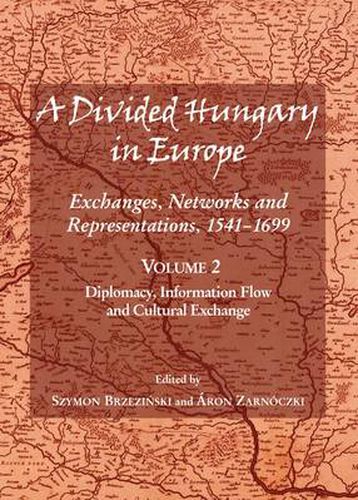Readings Newsletter
Become a Readings Member to make your shopping experience even easier.
Sign in or sign up for free!
You’re not far away from qualifying for FREE standard shipping within Australia
You’ve qualified for FREE standard shipping within Australia
The cart is loading…






Despite fragmentation, heterogeneity and the continuous pressure of the Ottoman Empire, early modern divided Hungary witnessed a surprising cultural flourishing in the sixteenth century, and maintained its common cultural identity in the seventeenth century. This could hardly have been possible without intense exchange with the rest of Europe. This three-volume series about early modern Hungary divided by Ottoman presence approaches themes of exchange of information and knowledge from two perspectives, namely, exchange through traditional channels provided by religious/educational institutions and the system of European study tours (Volume 1 - Study Tours and Intellectual-Religious Relationships), and the less regular channels and improvised networks of political diplomacy (Volume 2 - Diplomacy, Information Flow and Cultural Exchange). A by-product of this exchange of information was the changing image of early modern Hungary and Transylvania, which is presented in the third and in some aspects concluding volume of essays (Volume 3 - The Making and Uses of the Image of Hungary and Transylvania). Unlike earlier approaches to the same questions, these volumes draw an alternative map of early modern Hungary. On this map, the centre-periphery conceptions of European early modern culture are replaced by new narratives written from the perspective of historical actors, and the dominance of Western-Hungarian relationships is kept in balance due to the significance of Hungary’s direct neighbours, most importantly the Ottoman Empire.
$9.00 standard shipping within Australia
FREE standard shipping within Australia for orders over $100.00
Express & International shipping calculated at checkout
Despite fragmentation, heterogeneity and the continuous pressure of the Ottoman Empire, early modern divided Hungary witnessed a surprising cultural flourishing in the sixteenth century, and maintained its common cultural identity in the seventeenth century. This could hardly have been possible without intense exchange with the rest of Europe. This three-volume series about early modern Hungary divided by Ottoman presence approaches themes of exchange of information and knowledge from two perspectives, namely, exchange through traditional channels provided by religious/educational institutions and the system of European study tours (Volume 1 - Study Tours and Intellectual-Religious Relationships), and the less regular channels and improvised networks of political diplomacy (Volume 2 - Diplomacy, Information Flow and Cultural Exchange). A by-product of this exchange of information was the changing image of early modern Hungary and Transylvania, which is presented in the third and in some aspects concluding volume of essays (Volume 3 - The Making and Uses of the Image of Hungary and Transylvania). Unlike earlier approaches to the same questions, these volumes draw an alternative map of early modern Hungary. On this map, the centre-periphery conceptions of European early modern culture are replaced by new narratives written from the perspective of historical actors, and the dominance of Western-Hungarian relationships is kept in balance due to the significance of Hungary’s direct neighbours, most importantly the Ottoman Empire.